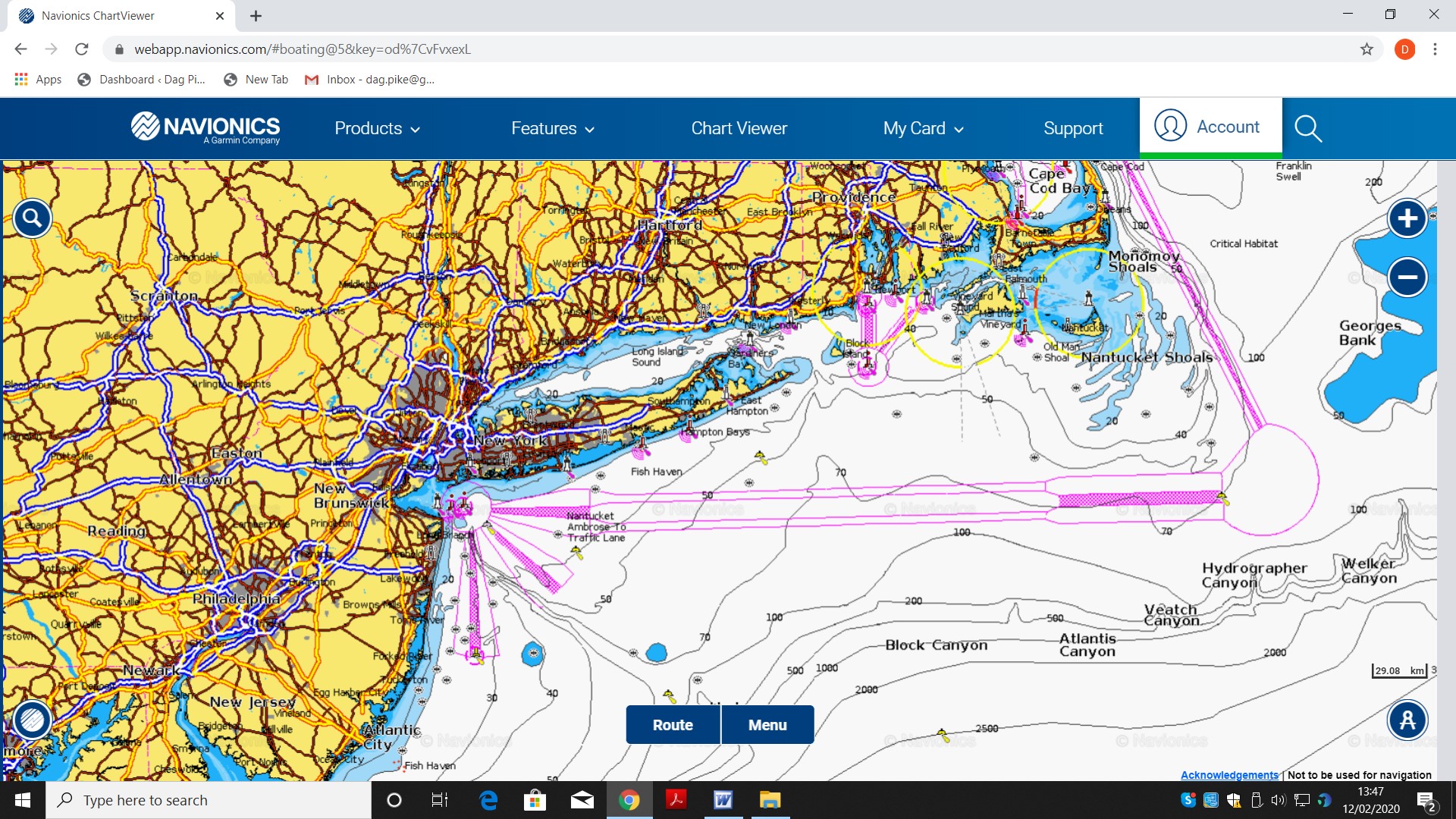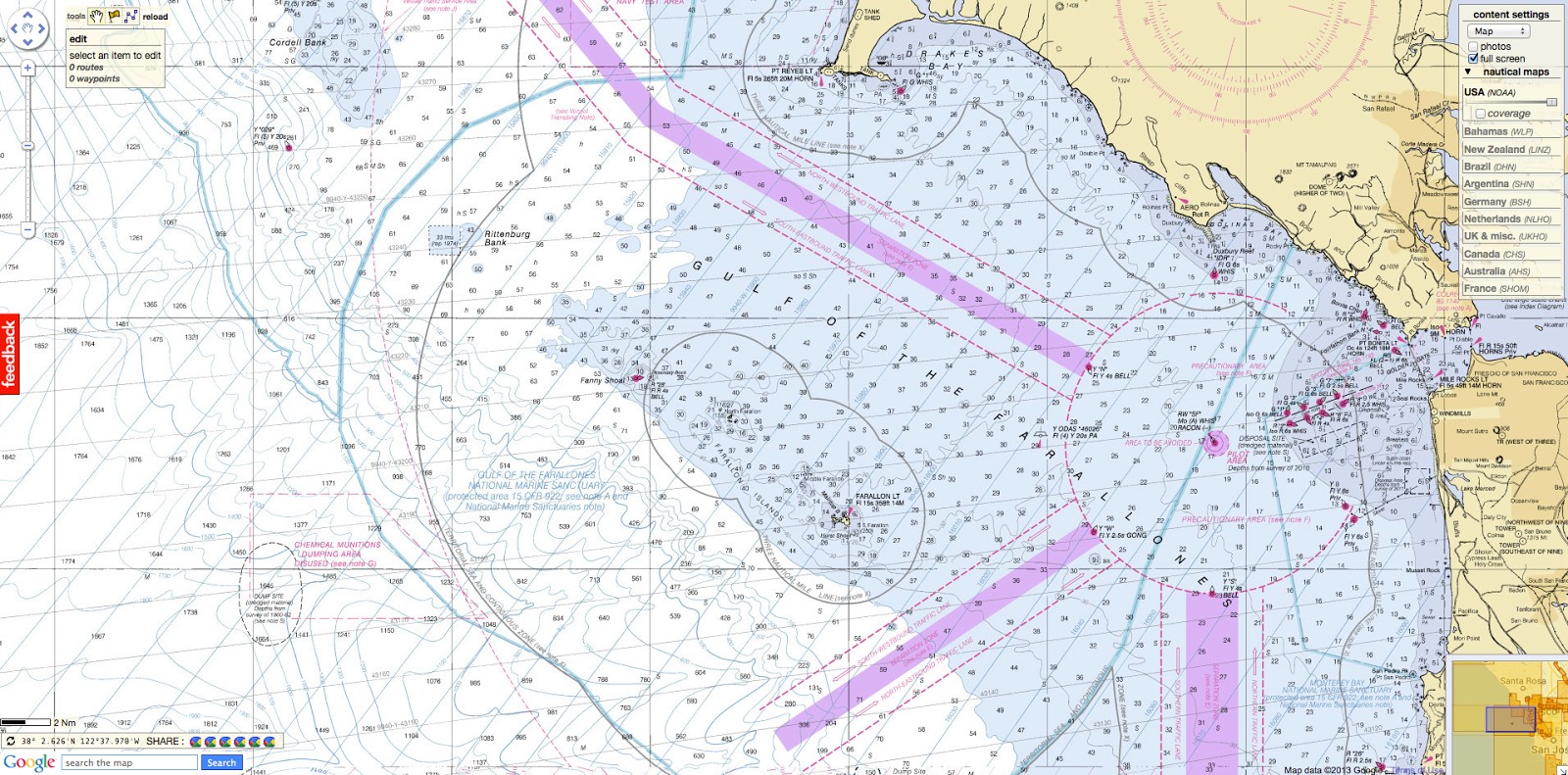Traffic Separation Schemes
By Dag Pike
Collissions Happen
I know that on my first voyage to sea on a ship when I was just 16 we collided with another ship in fog, fortunately with no serious damage and that was in the very busy Dover Straits that separate England and France.
That was the location of the first of these TSS and it was established back in 1967. Since then these schemes have sprung up around the world with the main ones in the US being concentrated around the New York-Boston areas on the East Coast and in the channels leading to Seattle on the West Coast. It is easy to think that these dedicated one-way channels are there only for the big ships and not for leisure boaters but think again.
TSS - If You Must, You Must
You may be lucky enough to be the owner a yacht that is more than 20 meters in overall length, that is about 66 feet, but if you are then you are obliged to use these one-way channels, Officially you are barred from using the inshore zones where there is freedom of movement and where many yachts go to keep out of the way of the big ships. It is a crazy rule to make boats that small use these often busy shipping lanes. The big ships do not want you there and you don’t want to be there in what is a lose-lose situation mixing up what are basically incompatible types of vessel but those are the international regulations that bind all ships and boats on the oceans.
TSS – Differs Country to Country
In some countries this rule is strictly enforced and if you break the rule then you could face hefty fines. There is a way you could get around this and use the inshore zones where you can enjoy much more freedom of movement. Here there are no traffic lanes as such and you are free to go where and how you want. The way around the rules for those yacht over 20 meters is that these inshore zones can be used by larger ships if they are bound for a port along the coast in that area. What is to say that you were bound for a port along that coast and then you change your mind? Do not ask me about how you might stand legally in this situation, that is one for the courts to argue but the whole situation does sound illogical.
I have been lobbying to get this changed for years but to no avail. I guess that having some sort of size limit for vessels using the inshore zone makes sense otherwise you could find it crowded by ships trying to take a short cut but 20 meters is much to small and a more realistic size might be 30 meters, say 100 feet long and remember that is the overall length, not the registered length or the waterline length.
Inshore Zone
The inshore zones are there to provide a safer option for smaller craft and they can often provide a shorter and certainly safer route when coastal navigating. In poor visibility, I would not want to be mixing with the big ships if I could avoid it. Sailing vessels of any size can use the inshore channels as long as they are under sail and so can fishing vessels provided that they are fishing so it is a bit of a mixed-up ruling.
If you aim to cross the main shipping channels to get from one side to the other as you might of many of both the east and west coast ports then you are also covered by the rules whatever size of boat you have. The aim is to get you across as quickly as possible so that you do not get in the way of the big ships so you must do so at right angles to the main flow of the shipping in the one-way system. When it says at right angles, this means that it is the heading of your vessel that must be a right angle to the main traffic flow i.e. the course you are steering and not your actual track over the ground.
Don't Meet Me at the Crossroads
In most cases, there are separation zones between the main channels that head in either direction which is there to stop ships getting too close to one another. Use of this separation zone between the main channels is not permitted except when you are crossing or in emergencies. If you cannot make progress under sail in the traffic lane because of the wind direction then you must use your engine and become a power-driven vessel.
It is a complicated set of rules but if you plan to navigate in the regions where these TSS exist then you need to understand them in detail in order to conform. If your size dictates that you have to use the shipping lanes it could mean a long detour in some areas such as the route from Boston to New York that goes outside the Nantucket Shoals and my choice would be to use the Cape Cod Canal that would qualify you to be heading for a port and be viable for you to use the inshore zone. The best solution is to try and avoid the big ships if your size and the rules allow it and in most cases, you can if you plan ahead. You also need to take extra care at the beginning and end of any separation zone where ships could be heading off or arriving from a variety of directions.

